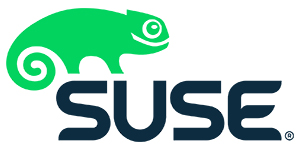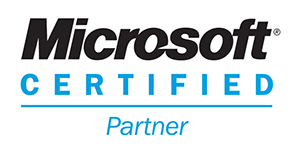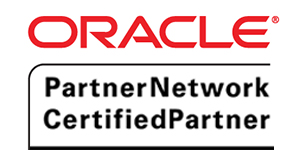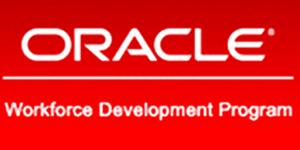
ONLINE
1 Mes Aproximadamente...
Modalidad Abierta
El Curso Microsoft MCSE: SQL 2021 Business Intelligence Development se imparte en modalidad Online.
Para realizar este curso, es aconsejable reunir los siguientes requisitos:
-Conocimientos del sistema operativo Microsoft Windows y su funcionalidad
-Conocimientos prácticos de las bases de datos relacionales.
-Alguna experiencia en diseño de base de datos.
Metodología
Nuestros cursos están basados en métodos docentes que facultan al profesor y orientan al alumno con el fin de conseguir un proceso evolutivo favorable de aprendizaje que permita mantener a los alumnos motivados y estimulados positivamente.
Material
Documentación oficial Microsoft
20-767 Implementing a SQL Data WarehouseReports with Microsoft SQL Server
20-768 Developing SQL Data Models
Prestaciones
-Un ordenador por persona
-Posibilidad de hacer prácticas libres en el aula.
Nota: Cas Training: () La documentación oficial está disponible en inglés y en formato electrónico exclusivamente.
Profesorado
Profesionales MCTS avalados por el fabricante
Exámenes de Certificación MCSA Business Intelligence:
70-767 Implementing a SQL Data WarehouseReports with Microsoft SQL Server
70-768 Developing SQL Data Models
Para acceder al Curso Microsoft MCSE: SQL 2016 Business Intelligence Development se requiere al menos 2 años de experiencia con bases de datos relacionales, incluyendo:
-Diseño de una base de datos normalizada.
-Creación de tablas y relaciones.
-Consultando con Transact-SQL.
-Alguna exposición a construcciones básicas de programación (como bucle y ramificación).
MOC 20767: Implementing a SQL Data Warehouse
1. Introduction to Data Warehousing
1.1. Overview of Data Warehousing
1.2. Considerations for a Data Warehouse Solution
2. Planning Data Warehouse Infrastructure
2.1. Considerations for Building a Data Warehouse
2.2. Data Warehouse Reference Architectures and Appliances
3. Designing and Implementing a Data Warehouse
3.1. Logical Design for a Data Warehouse
3.2. Physical Design for a Data Warehouse
4. Columnstore Indexes
4.1. Introduction to Columnstore Indexes
4.2. Creating Columnstore Indexes
4.3. Working with Columnstore Indexes
5. Implementing an Azure SQL Data Warehouse
5.1. Advantages of Azure SQL Data Warehouse
5.2. Implementing an Azure SQL Data Warehouse
5.3. Developing an Azure SQL Data Warehouse
5.4. Migrating to an Azure SQ Data Warehouse
6. Creating an ETL Solution
6.1. Introduction to ETL with SSIS
6.2. Exploring Source Data
6.3. Implementing Data Flow
7. Implementing Control Flow in an SSIS Package
7.1. Introduction to Control Flow
7.2. Creating Dynamic Packages
7.3. Using Containers
8. Debugging and Troubleshooting SSIS Packages
8.1. Debugging an SSIS Package
8.2. Logging SSIS Package Events
8.3. Handling Errors in an SSIS Package
9. Implementing an Incremental ETL Process
9.1. Introduction to Incremental ETL
9.2. Extracting Modified Data
9.3. Temporal Tables
10. Enforcing Data Quality
10.1. Introduction to Data Quality
10.2. Using Data Quality Services to Cleanse Data
10.3. Using Data Quality Services to Match Data
11. Using Master Data Services
11.1. Master Data Services Concepts
11.2. Implementing a Master Data Services Model
11.3. Managing Master Data
11.4. Creating a Master Data Hub
12. Extending SQL Server Integration Services (SSIS)
12.1. Using Custom Components in SSIS
12.2. Using Scripting in SSIS
13. Deploying and Configuring SSIS Packages
13.1. Overview of SSIS Deployment
13.2. Deploying SSIS Projects
13.3. Planning SSIS Package Execution
14. Consuming Data in a Data Warehouse
14.1. Introduction to Business Intelligence
14.2. Introduction to Reporting
14.3. An Introduction to Data Analysis
14.4. Analyzing Data with Azure SQL Data Warehouse
MOC 20768: Developing SQL Data Models
1. Introduction to Business Intelligence and Data Modeling
1.1. Introduction to Business Intelligence
1.2. The Microsoft business intelligence platform
2. Creating Multidimensional Databases
2.1. Introduction to multidimensional analysis
2.2. Creating data sources and data source views
2.3. Creating a cube
2.4. Overview of cube security
3. Working with Cubes and Dimensions
3.1. Configuring dimensions
3.2. Define attribute hierarchies
3.3. Sorting and grouping attributes
4. Working with Measures and Measure Groups
4.1. Working with measures
4.2. Working with measure groups
5. Introduction to MDX
5.1. MDX fundamentals
5.2. Adding calculations to a cube
5.3. Using MDX to query a cube
6. Customizing Cube Functionality
6.1. Implementing key performance indicators
6.2. Implementing actions
6.3. Implementing perspectives
6.4. Implementing translations
7. Implementing a Tabular Data Model by Using Analysis Services
7.1. Introduction to tabular data models
7.2. Creating a tabular data model
7.3. Using an analysis services tabular model in an enterprise BI solution
8. Introduction to Data Analysis Expression (DAX)
8.1. DAX fundamentals
8.2. Using DAX to create calculated columns and measures in a tabular data model
9. Performing Predictive Analysis with Data Mining
9.1. Overview of data mining
9.2. Using the data mining add-in for Excel
9.3. Creating a custom data mining solution
9.4. Validating a data mining model
9.5. Connecting to and consuming a data mining model















